90%
of all imports were classified as de minimins shipments in FY2024*
Power your entire consumer experience. From pre-purchase tools to increase cart-conversion, rapid physical fulfillment saving you days in transit, to post-delivery services that protect your brand loyalty.
We power over $5 billion in commerce every year, and are ready to scale yours.
Enable your commerce with best-in-class software. Track every item, protect every order, and ensure repeat customers with our complete suite of software tools.
Our software was built in tandem with our fulfillment services to provide greater visibility, control, and data to drive your growth.
Hundreds of leading DTC and B2B companies trust us with their fulfillment and consumer experience.
We delivered to over 11.5% of US homes in 2024 for our customers, including brands like AG1, Native, Tula, American Giant, Legion Athletics, and more.
Find our latest news and announcements, interviews, helpful articles and guides, ebooks, and more.
How Brands Can Preserve Margins and Customer Experience in a Post-321 World
Key Insights For Brands Based in Specific Regions:
90%
of all imports were classified as de minimins shipments in FY2024*
Closing the de minimis loophole overhauls the playing field. This means you likely have more speed, reliability, and potentially a price advantage over the competition. But that won’t last forever.
Make sure to utilize this period to refine your process and cement your position. Consider savvy marketing campaigns like - Delivered from America- to earn more loyal customers.
What is changing and when: The United States is ending its long-standing “de minimis” exemption—the rule that allowed low-value imports (under $800) to enter duty-free with minimal customs formalities. Effective August 29, 2025, all countries lose this exemption, marking the end of duty-free entry for packages under $800.1 In practical terms, this means every e-commerce parcel entering the U.S. will now be subject to normal import duties, taxes, and customs clearance procedures, regardless of value. Postal mail shipments get a short-lived exception with a flat per-package duty, but that too phases out after six months and may be even exceed the standard tariff rate depending on the shipment's value.1 This policy shift was foreshadowed on May 2, 2025, when U.S. ended Section 321 de minimis treatment for goods from China and Hong Kong,2 immediately halted duty-free e-commerce parcels from those regions. The global end of de minimis was originally set to take effect on July 1, 2027, under the One, Big, Beautiful Bill Act that was signed into law July 4th.3 But this timeline has now been accelerated. By the end of August, the de minimis loophole will be closed globally.
Who is affected: The impact is sweeping across the e-commerce ecosystem. Brands and merchants that built their fulfillment model on direct cross-border shipping will feel this most. This includes dropshippers, marketplace sellers on platforms like Amazon, eBay, and Etsy, and fast-fashion exporters. Third-party logistics (3PL) providers and fulfillment partners serving these merchants are also affected. Even U.S. brands that manufacture abroad and ship direct-to-consumer (DTC) from overseas warehouses will have to overhaul their approach. In short, any operator who relied on the Section 321 de minimis exception to speed parcels into the U.S. without duties or extensive paperwork is now subject to the full customs regime.
Why this is happening: The end of de minimis aims to address national security threats, trade fairness, & compliance gaps:
U.S. authorities found that the flood of low-value packages made it “impossible” to enforce bans on goods made with forced labor or to catch illegal items. In 2024, over 90% of all U.S. customs enforcement actions (e.g., seizures of contraband, counterfeit, or non-compliant goods) involved de minimis shipments.4 Low-value parcels are used to smuggle fentanyl, counterfeit luxury goods, unsafe electronics, and other contraband in volumes that overwhelmed inspection capacity. A House committee report, for example, noted that platforms like Temu performed zero audits for Uyghur Forced Labor Prevention Act (UFLPA) compliance, allowing goods from prohibited regions to slip in unchecked.5 By ending de minimis, regulators aim to force these shipments into formal review channels, closing what the White House called a security loophole exploited by bad actors.
The de minimis rule, especially at an $800 threshold (one of the most generous in the world), was seen as disadvantageous to American producers and robbing the U.S. of tariff revenue. Low-cost foreign retailers could undercut domestic brands by avoiding import duties on everything from $5 t-shirts to $50 gadgets. Meanwhile, U.S. Customs and Border Protection (CBP) estimates the government lost $3-4 billion in annual tariff revenue due to de minimis in recent years.6 Eliminating the exemption is intended to recapture that revenue and create a more level playing field. U.S. policymakers also pointed to reciprocity: China’s de minimis threshold is effectively only $7, so American exports face duties in China while Chinese exports enjoyed duty-free entry into the U.S. Closing the loophole is viewed as addressing an asymmetry in trade practices.
Beyond tariffs, the de minimis flood exposed gaps in compliance with various import laws. Everything from product safety certifications, FDA regulations (for supplements, cosmetics, etc.), to intellectual property enforcement was harder to police with millions of small packages skirting formal entry. 97% of counterfeit product seizures in 2024 were in de minimis shipments, amounting to over 30 million fake items seized.7 By requiring formal customs entry for all goods, authorities expect better oversight on product safety and legality. In short, the policy shift is meant to force e-commerce imports “out of the shadows” and into full compliance with import laws.
The scale of the change: To grasp how dramatic this shift is, consider that CBP processed over 1.36 billion de minimis packages in FY2024, averaging 4+ million parcels per day.8 These low-value parcels made up an estimated 92% of all U.S. import entries by volume.9 The $800 threshold (raised from $200 in 2016) supercharged cross-border e-commerce, causing shipments to balloon from 220 million in 2016 to over a billion by 2024, fueled largely by direct-from-factory sales from Asia. Two Chinese giants, Shein and Temu, were shipping about 600,000 packages per day to U.S. customers at the height of this trend.10 All of that is now subject to duty and delay. In effect, the Wild West period of virtually unchecked small-parcel imports is ending, ushering in a new era where importing even a $10 trinket requires jumping through hoops that used to apply only to big commercial shipments.
The end of de minimis will have wide-ranging impacts on costs, logistics, competition, and customer behavior:
The most immediate hit is financial. Every formerly duty-free shipment will now incur import charges based on product category, with a 10% baseline tariff rate.11 Apparel is hit harder with an average rate of 23.8%.12 And for most Chinese imports, total tariffs can be up to 145%.13 Landed costs are rising across the board, by anywhere from a few percent on low-tariff items up to double or triple the cost for goods from countries facing punitive rates. On top of government tariffs, brands must also budget for new brokerage and handling fees from carriers and customs brokers, which can easily add another $10-$20 to each parcel. Some postal consolidators and courier services that previously offered cheap Section 321 delivery might even transition customers to more expensive formal import services.
Operationally, the end of de minimis introduces friction at multiple points in the supply chain. Importers will be required to file formal customs entries for low-value goods. This includes generating HS codes, providing commercial invoices with precise declared values, and in many cases, submitting formal entry documentation (CBP Form 7501) even for a $50 item. Smaller businesses that previously never dealt with customs will need to learn fast or hire brokers. With millions of additional shipments now subject to these formal customs processes, delays will become the new normal. Signs of strain are already visible. During an initial attempt to revoke de minimis in February, USPS temporarily stopped accepting packages from China as customs systems crashed under the surge of formal entries.14 Then, in the trial run in May when Chinese packages lost de minimis status, average delivery times jumped from around 7-10 days to 14-21 days due to customs bottlenecks. Brands should anticipate that shipments coming from abroad will face unpredictable clearance times, at least until new systems and staffing are properly in place. While CBP has since upgraded systems, some hiccups and learning curve delays are likely in the first weeks and months post-implementation. Brands will need to build in extra lead time and contingency plans to protect the customer experience and prevent their reputation from becoming a casualty of this new era of trade.
The repeal of de minimis is set to reshape the competitive landscape of retail and e-commerce, in many ways leveling the playing field for domestic brands. Foreign sellers that once relied on duty-free shipping to offer ultra-low prices must now factor in tariffs, reducing their cost advantage. This creates an opportunity for U.S.-based retailers and brands to reclaim market share. Products made or warehoused in the U.S. are now more price-competitive as imported alternatives become more expensive. In the weeks after the initial de minimis crackdown, shoppers who pulled back from Temu and Shein redirected spending at stores like Old Navy, Nordstrom Rack, Ulta Beauty, and even resale outlets, seeking affordable alternatives.15 However, this competitive dynamic can cut both ways. Large global companies have the resources to open new U.S. warehouses and potentially absorb new costs in the interim. In contrast, smaller DTC brands that relied on Chinese manufacturers and dropshipping may struggle with rising costs. But regardless of size, those that adapt quickly can still compete and even win. U.S. brands that act fast stand to benefit from a more level playing field. In the end, agility will determine who gains and who loses in this new chapter of global retail.
With higher costs and slower deliveries on the horizon, customer experience is at risk. American consumers have been spoiled by years of cheap or even free shipping from overseas, often receiving a $5 item in a week or less. Now, as shipping times lengthen and many retailers start adding tariff surcharges at checkout, consumers could react with frustration or by seeking alternatives. Nearly 40% of online shoppers16 are likely to abandon their carts when faced with these extra tariff and duty surcharges at checkout. Early evidence showed significant “sticker shock” when Chinese platforms began tacking on tariff fees, leading to a rapid slowdown in sales growth for Temu and Shein in spring 2025.17 Another churn driver is delivery reliability. If parcels get stuck in customs and miss their promised delivery windows, expect complaints, refund requests, and even chargebacks to spike. Customers may not understand why an item that used to come in 5-7 days now takes 3 weeks. Clear communication (addressed in a later section) will be key to mitigating this. If your brand’s value proposition was primarily “cheapest option” and that is no longer true after adding duties, you may see customers defect unless you can pivot on value or experience. With this upheaval, customer loyalty will be tested. Brands must be proactive to prevent mass churn by adjusting their customer experience strategies (more on that below).
With the rule change imminent or already in effect, time is critical. Here are what brands can do:
Conduct a swift audit of your product catalog and fulfillment routes to identify which SKUs or orders have been relying on the de minimis exemption. Focus on any items shipped from overseas to U.S. customers. These will now incur duties and potential delays. Quantify the business impact: how many orders or what percentage of revenue came through this channel in the past 6-12 months? This audit should also flag high-tariff product categories. For instance, an apparel brand might identify dozens of clothing items shipped from an Asian warehouse. These products, which carry high import duties, are especially vulnerable to margin erosion. Mapping these SKUs and the related customer orders should be the priority when planning solutions.
Using audit data, model the financial impact of the new rules on your unit economics. Consider orders that previously slipped in duty-free and calculate what duties would be due now. This involves identifying the correct Harmonized Tariff Schedule (HTS) codes for your products and applying the corresponding duty rate, including any country-specific tariffs that may apply.18 For example, consider a $50 electronic gadget imported from China. Under the old rules, you paid $0 in duties, and likely avoided broker or processing fees. Now, that same item could face a 10% general import duty, plus a 7.5% China-specific tariff. That’s $8.75 in duties. Add an estimated $3 broker fee for the formal customs entry, and your new landed cost jumps from $50 to $61.75, which is a 23.5% increase. These simulations will reveal which products lose viability or require price increases. You should also simulate in bulk. If you import 1,000 units at once, what costs do you incur in duties, freight, and warehousing versus individual shipments? The answer will give you a clear understanding of the most cost-effective fulfillment strategy to employ and the margin impact this will have on each major product line. Many import-reliant brands are coming to terms with thinner margins or passing costs to consumers. Your analysis will guide which path is feasible.
Reach out to your 3PLs, freight forwarders, and parcel carriers immediately to discuss how they are handling the end of de minimis. Good partners should already have plans, but you must be informed and aligned. Start by asking the right operational questions: Can they handle formal customs entries? Do they have brokers in place and systems ready for the increased paperwork? If you’re using an overseas fulfillment center, can they reroute or consolidate shipments to the U.S. now that each package will no longer be duty-free? Some express carriers like UPS or DHL can broker shipments for a fee, but if you’re shipping at scale, consider a dedicated customs brokerage firm or a compliance platform that integrates with CBP’s Automated Commercial Environment (ACE).19 Clarify operational responsibilities across your network, especially around customs compliance and the Importer of Record designation. If your company takes on that role, ensure duties and filings are handled in advance to prevent surprises downstream. Avoid setups where duties are pushed to the customer, as this often creates friction and confusion. Communicate all these decisions clearly with carriers to ensure duties are billed correctly. Ultimately, get your logistics network aligned now. Warehouse managers to last-mile carriers should know there’s a new playbook starting August 29. Open communication will also surface any partner-specific issues. The sooner you know, the faster you can adapt or find alternative solutions.
The analysis you conduct will likely reveal a significant increase in landed costs and a subsequent squeeze on margins. This is where a partner like Wayflyer becomes invaluable. Instead of immediately passing costs on to consumers or accepting thinner margins, Wayflyer provides a solution to the immediate and growing cash flow challenges presented by the end of de minimis. The shift to bulk importation, while potentially more cost-effective in the long run, requires a substantial upfront investment in inventory. For our example of the $50 gadget, importing 1,000 units at once means a new landed cost of roughly $61,750 (excluding bulk freight and warehousing costs). This is a significant capital outlay that many brands, especially those reliant on a direct-to-consumer model, may not have readily available.
Wayflyer offers flexible financing solutions that can bridge this gap. They provide the capital needed to pay for the larger, bulk orders and the associated duties, freight, and warehousing fees. This allows you to adopt the most cost-effective fulfillment strategy without having to deplete your working capital or take on high-interest loans. By securing financing for your bulk imports, you can maintain a healthy cash flow and ensure a consistent supply of your products.
Should your analysis show that a price increase is unavoidable, Wayflyer can also help you soften the blow. Their funding can be used to fuel your marketing efforts. By increasing your ad spend, you can drive a higher volume of sales to offset the impact of the price hike. This strategy helps you maintain profitability and brand loyalty by focusing on customer acquisition and retention, rather than simply absorbing the hit to your margins.
Meet with your planning teams to discuss how the end of de minimis may affect short-, mid-, and long-term planning models. Effective forecasting capabilities should adapt to changes within a realistic timeframe. If you are still relying on Excel-based or manual planning, consider AI-driven solutions that can deliver more accurate forecasts and autonomously adjust as conditions change. Start with clear questions:
Many companies are now exploring AI in demand forecasting. For example, Omnifold, a partner of Stord, develops AI systems that learn the specific requirements of each supply chain and adapt rapidly to changing market dynamics. Such systems go beyond simply placing a language model on top of a legacy planning tool—they integrate data, learn over time, and respond effectively to diverse market events.
After immediate triage, brands need to make changes to their fulfillment strategy to offset the cost increases:
One of the most effective long-term mitigations is to bring your fulfillment stateside. If you currently ship each order from overseas, pivot to importing in bulk and stocking inventory in a U.S. warehouse. By leveraging a unified system like Stord's OMS, brands can seamlessly manage this new multi-node inventory. After clearing customs, you can fulfill orders from your domestic stock via normal ground shipping, which will be faster and more predictable.
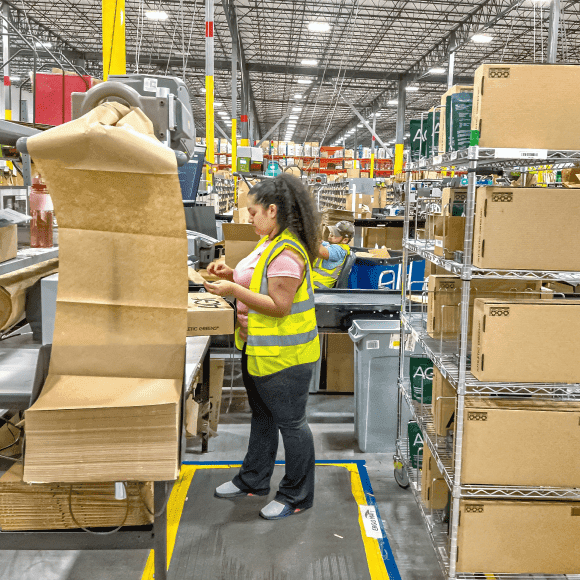
A solution like Stord Parcel can automatically select the most cost-effective ground shipping option for each order, further optimizing the domestic fulfillment process. This approach trades some upfront cost and complexity for lower variable costs per order. For example, a brand might air freight a week’s worth of orders shipped from overseas to a California warehouse, then ship out to customers in 2-3 days, rather than sending each item via international mail. Domestic warehousing introduces inventory holding costs and forecasts risk, but it significantly reduces the per-order duty burden and shipping time.
Centralizing returns in a U.S. facility prevents having to re-export goods cross-border (which would incur duties again when re-imported). Brands can also explore refurbishment or resale programs within the domestic market to recover value without paying repeat tariffs. Using an intelligent returns platform like Frate that can auto-route returns to the most cost-effective location, whether it's to an in-country 3PL or through resale channels, helps protect margins in a post-de minimis world.
“We’ve seen a noticeable shift in conversations with brands that only have a single warehouse. Many are now asking how to set up fulfillment in other countries to avoid cross-border duty cycles, and exploring resale channels within those markets so returned products can be resold locally instead of shipped back overseas. Stord has been our number one partner throughout this process.”

bailey newton, CEO of Frate returns
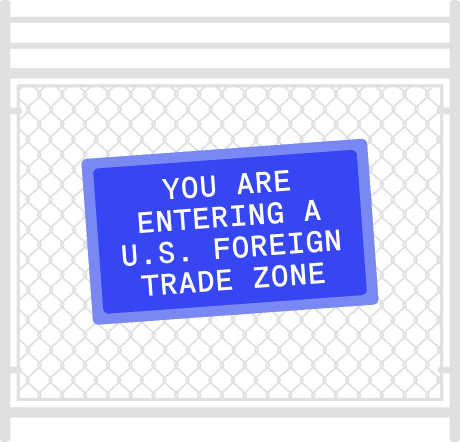
For brands not ready to fully commit to U.S. warehousing, or those importing high-value goods, utilizing an FTZ could be a smart interim strategy. An FTZ is a designated area in or near a U.S. port where goods can be landed, stored, and even repackaged or assembled without being considered imported for customs purposes until they exit the zone into U.S. commerce.
By bringing products into an FTZ, you defer duties until the moment the goods ship to the customer. This can aid cash flow because you don’t pay tariffs on inventory sitting unsold, and if you export some products or components, you might avoid paying U.S. duties altogether on those. FTZs also allow for possibilities like light assembly or kitting. For instance, if you import components, you could assemble them in the FTZ and possibly qualify for a lower duty rate on the finished product if its classification changes. Some brands might use FTZs near distribution hubs like in Los Angeles or New Jersey as a way to receive bulk international shipments, hold them, and then do daily withdrawals to ship orders. This can help smooth out duty payments. Bonded warehouses serve a similar purpose on a smaller scale. These are secure storage where customs duties are suspended until goods leave the facility. Using an FTZ or bonded warehouse introduces extra administration to file customs entries when goods move out of the zone and not all 3PLs offer this option. But for high-duty goods or large volumes, the savings can be meaningful. Take note that in the post-de minimis world, FTZs won’t avoid duties permanently, but they can delay or reduce the financial impact. For example, if you suspect tariffs might be lowered in the future or your goods might be re-exported, an FTZ buys you flexibility. Brands should evaluate the cost-benefit based on their product turnover and duty rates.
If you were sending hundreds of individual parcels per week from overseas, look for ways to bundle them into larger shipments. This might mean aggregating daily orders by country of origin and sending them together. Savvy shippers respond by consolidating orders above $800 into single shipments to justify the formal entry cost. You can apply this at various levels. At origin, combine multiple customer orders into one box if they’re going to the same region. If they’re going to different customers, you’d need a domestic break-bulk distribution. Alternatively, consolidate at the supplier level.
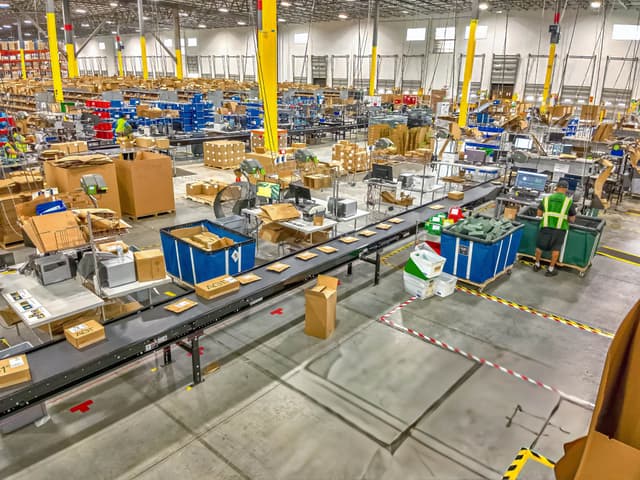
For instance, instead of Supplier A sending 50 packages a day, have them bulk-send one lot of 350 packages per week. You’ll incur warehouse handling to separate them on arrival, but you’ve saved massively on international postage and redundant customs filings. Freight forwarders and 3PLs can help design consolidation programs. For example, some 3PLs offer services where they collect your overseas orders, put them on a pallet or in a container, do one customs entry, then inject the individual packages into domestic carriers for final delivery. This is recreating what de minimis was, but under a formal process you control. The benefit is spreading out fixed costs (one customs entry fee, one bond, one bulk freight charge) over many orders. Be mindful of the threshold for informal vs. formal entries. As of now, shipments valued up to $2,500 can often be cleared with simpler informal entries,20 though they may still be subject to duties. Shipments over that amount require a formal entry and a customs bond. If you consolidate heavily, such as a $50k container for every overseas shipment, you’ll need to do a formal entry and have a broker in place. Still, one formal entry for $50k of goods is far more cost-effective than 500 separate informal entries for $100-value parcels. The overarching principle is maximize shipment size, minimize shipment count to dilute the cost of customs clearance and duty handling.
To further optimize costs under the updated regulations, brands should rethink how products are packaged and offered to customers. One tactic is encouraging larger basket sizes to increase the average shipment value. While it sounds counterintuitive, a higher-value shipment can be more cost-effective as many of the new surcharges have a per-shipment component.
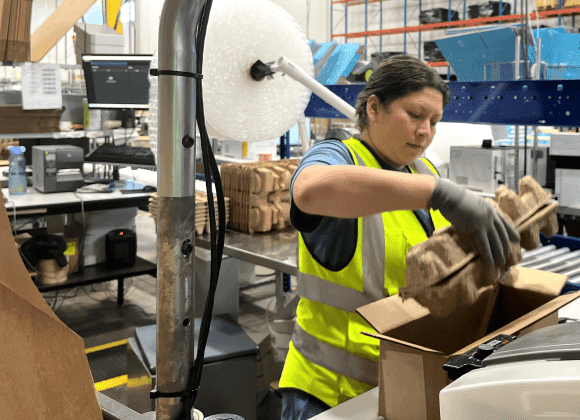
For instance, the flat fees on postal items ($80, $160, or $200 per package depending on origin country tariffs) mean two $50 parcels would incur double the fees of one $100 parcel. Likewise, if your carrier charges a minimum entry fee, a single combined shipment avoids paying that fee twice. Stord’s OMS, for example, can intelligently consolidate multiple items from a single customer into one shipment, reducing per-order fulfillment costs and avoiding redundant customs processing. Paired with strategic SKU bundling (e.g., selling 3 products as one set), brands can increase the per-order value and consolidate packaging. Customized branded inserts can further support this strategy by promoting bundle deals directly during the unboxing experience, encouraging future multi-SKU purchases and increasing repeat order value. Redesigning packaging can also help lower the dutiable value or shipping weight. For example, shipping products unassembled or in kit form may qualify them under a different classification or allow more items to fit in a single box. This is a 180° shift from de minimis-era strategies. Previously, brands split shipments to stay under the $800 threshold. Now, combining items to stay under the $2,500 informal entry limit may be more advantageous. If you must raise prices due to tariffs, value engineering your product bundles can soften the perception of the price increase. While these measures don’t eliminate tariffs, they reduce the per-unit impact.
(Note: While de minimis is essentially ended, many details are still in development. The following is based on what is known, but stay tuned for final CBP guidance to confirm any streamlined clearance programs.) The traditional Section 321 entry (also known as Type 86 entry in CBP’s system) was the electronic filing for duty-free shipments.
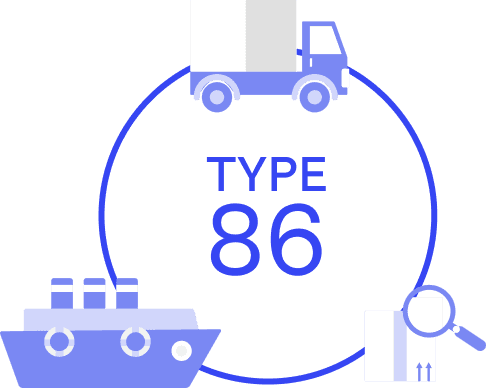
After August 29, standard Type 86 filings for duty exemption are off the table, but CBP may still allow simplified informal entry filings via a new enhanced entry process for low-value shipments that now owe duty.21 In other words, there could be a way to transmit the needed data to CBP for parcels (HS code, value, importer info) without doing a full formal entry each time, paying the computed duties electronically. If you qualify as a trusted trader or use certain authorized carrier programs, you might benefit from faster processing.22 Also, keep an eye on any country-specific exclusions or changes. For instance, some trade bills have discussed reinstating higher de minimis for trusted trading partners or for “Made in USA” goods returning. Nothing concrete is in place now except the temporary modified fee structure for postal mail,23 but being aware of legal developments could present opportunities. While the blanket exemption is gone,24 optimization within the new rules (through proper entry type selection, duty drawback25 if you re-export goods, etc.) can save money. This is an area where consulting a customs expert can uncover small but meaningful advantages tailored to your business.

The value of US based inventory has skyrocketed following the end of de minimis, and with it, the value of in-country returns. Now, more than ever, brands should be evaluating the efficiency of their reverse logistics — from RMA to restock. While the online experience (return portal) often receives significant investment, brands tend to overlook returns operations in the warehouse — inspection, grading, and dispositioning.
Mismanaged SOPs, fraud, and inefficient processing can significantly slow restock times and adversely affect inventory health. In fact, for a $100M apparel brand with an average return rate of 25% and restock rate of 80%, just a 5 percentage point improvement in restock rate can deliver a 2-3% increase in net income — saving significant investment in inventory and limiting tariff exposure. Stord partners with technology like Two Boxes to deliver an efficient returns operation from dock to restock. On average, apparel brands see 3X more units processed per hour, with over 85% returning to stock. This underscores the importance of a holistic evaluation of the supply chain — not just forward operations.
Preserving customer experience is as important as protecting margins. Sudden changes in shipping speed or costs can alienate buyers, so brands should take deliberate steps to keep customers satisfied, or at least understanding, in this transition:
With longer delivery times due to new customs processing, update the shipping estimates on all your channels without delay. It’s far better for a customer to see “Estimated delivery: 2-3 weeks” up front than to promise 5-7 days and risk frustration when the package is stuck in customs for 10 extra days. To keep delivery promises accurate in a dynamic environment, a solution like Stord has a platform that offers robust AI-powered Estimated Delivery Dates (EDD) and shipping options controls. This technology calculates accurate delivery promises in real time based on carrier performance and new customs variables. Moreover, review all customer touchpoints, such as product pages, checkout process, and confirmation emails, and revise the messaging to clearly communicate new timelines or potential delays. A simple note like, “Due to recent changes in U.S. import regulations, international orders may take an additional 5-7 days to clear customs.” helps manage expectations and reduce support tickets. Similarly, be transparent about any new costs. If you’ve added tariff surcharges or increased shipping fees, mention them clearly like “Includes U.S. import tariffs” or “Free shipping over $75, import fees included”. Customers are more forgiving when they are properly informed. Finally, update your FAQ or shipping policy pages with a straightforward explanation of the changes. It can be something along the lines of, “Why are shipping times a bit longer? New U.S. import rules require all products to go through customs, which may add a few days. We’re working hard to deliver your order as quickly as possible.” This reassures customers you’re on top of it and proactive in addressing delays.
To keep conversion rates strong and encourage buying behaviors that preserve your margins, adjust your promotions around shipping. If you currently offer free shipping on any order, consider setting a minimum order value threshold to encourage larger baskets that help offset duty and processing costs. For ease of implementation, you can use Stord’s A/B testing shipping options controls to easily configure and manage these kinds of conditional free shipping rules directly in the checkout process. Bundling is another powerful lever. By creating product bundles or “buy more, save more” deals, customers can feel like they’re getting a steal, while you benefit from fewer shipments and higher-value orders that better absorb fixed import costs. Another tactic is offering loyalty perks or limited-time coupons to retain returning customers despite price adjustments. For example, “We’ve added some new import costs, but as a thanks for your loyalty, here’s a 10% off coupon on your next purchase.” This small gesture can ease the impact of price changes and keep shoppers coming back. But before rolling out any free shipping or discount offers, run the numbers to ensure they’re sustainable in light of new duties. The goal is to protect your margins while guiding customers toward behaviors that align with your revised cost structure.
Once your shipping estimates and promotional strategies are updated, close the loop with clear customer communication. Own the narrative and be the first to explain why things are changing. Start with a well-crafted email to your subscriber list. For example: “Dear customers, you may have heard about recent trade policy changes in the news. We want to share how this may affect your orders…” From there, explain in straightforward terms that all orders must now clear customs, which may result in longer delivery windows or modest price adjustments, and then emphasize the positive steps you’re taking to manage the situation. On your website, consider adding a banner or notice about shipping changes. This not only sets expectations but also positions your brand as more transparent than competitors. Make sure your customer service team is briefed and add a few Q&As to your support scripts explaining the delays or duty charges. Also consider publishing a blog post or short video explaining the changes and thanking customers for their continued support. More savvy brands can implement personalized inserts within the package to help further manage the communication, and set automatic email triggers to keep customers apprised of any changes. Brands that are upfront and communicative are likely to retain loyalty better than those that leave customers confused or frustrated.
For brands that continue to ship from outside the U.S., adopting a DDP (Delivered Duty Paid) model is quickly becoming standard practice for compliance and to protect the customer experience. Under DDP, you handle all import costs and present a final, fully landed price at checkout, so the customer pays all costs only once without any unexpected charges upon delivery.26 Prominently advertising that “All duties and taxes are paid by us. No extra fees on delivery.” turns the checkout experience into a powerful trust signal for shoppers.
Even with proactive measures in place, some customers will still likely experience longer delivery times or modest cost increases. How you handle these situations can significantly impact your brand reputation. Equip your support team to respond confidently by providing accurate tracking information and clear explanations of customs-related delays. A solution like Stord's branded tracking portal can give customers real-time visibility into their shipments, which helps reduce “Where is my order?” (WISMO) inquiries and builds trust. For cases where a package is severely delayed or lost, be ready to offer flexible resolutions. Stord provides Shipment Protection for a simple claims process, allowing you to quickly issue refunds or re-shipments without incurring a loss. These gestures help retain customers and mitigate negative experiences. Customers often remember how a problem was handled more than the issue itself—fast, empathetic service makes all the difference.
To put the above strategies in context, let’s examine how certain companies and sectors are navigating the post-de minimis world, and benchmark the cost impact across product categories:
Chinese-founded e-commerce platforms Shein and Temu became emblematic of the de minimis era. By leveraging the Section 321 loophole, they built a direct-from-China fulfillment model, shipping hundreds of thousands of parcels daily to U.S. consumers at shockingly ultra-cheap prices compared to domestic brands. Now, with the playing field leveling on import duties, U.S. brands are beginning to regain a competitive edge. A Consumer Edge research from April 2025 shows a sharp slowdown in growth for these overseas platforms, while American retailers like Old Navy and Nordstrom Rack saw meaningful gains in consumer spending.27 In response, Temu has pivoted to a domestic fulfillment model, warehousing bulk inventory in the U.S. or working with local dropshippers so that orders arrive quickly and duties are paid upfront. Shein is following suit, investing in North American distribution centers to localize more of its operations.28
Even U.S. discount chains like Five Below are reportedly adjusting their sourcing to capitalize on customers seeking low-cost products without the risk of import delays.29 While American brands that rely on overseas sourcing still face higher costs, the advantage now lies with those that either manufacture domestically or source from tariff-exempt countries. Larger players like Steve Madden are better positioned to absorb these changes, having already diversified their supply chains to countries like Mexico and Vietnam.30 This shift allows U.S. brands to compete on product and brand attributes without being consistently undersold by 25-30% due to a tax loophole, and they can now more prominently highlight "Shipped from USA" as a powerful marketing asset.31
Here’s a breakdown of how U.S. brands under different product categories are affected:
Apparel is arguably the hardest-hit category, facing traditionally high import tariffs ranging from 15-30% depending on the material and garment type.32 When sourcing from China, additional punitive duties can push total tariffs well beyond 50%. For instance, a cotton shirt with a 16% Most Favored Nation (MFN) duty could face combined tariffs of up to 41% or more, depending on classification. Some apparel items may be hit even harder under specific HTS codes. As a result, a landed cost of $10 could easily rise to $14-$18 post-import. Fashion brands operating on thin margins must adapt. Many apparel brands are already raising prices, shifting production to lower-cost countries like Vietnam or Bangladesh, or cutting costs elsewhere. This directly threatens ultra-cheap “dupe” brands, whose business models were built on the de minimis loophole. A decline in the sheer variety of cheap, fast-fashion apparel is expected. On the other hand, domestic apparel producers or those in tariff-exempt trade agreement countries may step in to meet the demand from value-conscious consumers. For these players, the market is shifting in their favor.
Many electronics like smartphones, laptops, and headphones enjoyed zero tariffs under MFN status. However, the new U.S. policy introduced a blanket 10% tariff on most imports, with some exemptions for critical tech components.33 Notably, smartphones and computers remain exempt from the harshest China-specific tariffs. Still, a wide range of general consumer electronics such as gadgets, accessories, and small appliances now face duties of 10-15%. Additionally, direct-to-consumer shipments in this category may now encounter stricter enforcement of FCC compliance or lithium battery shipping regulations due to the shift to formal customs entry. The net effect is an estimated 10-25% price hike on consumer electronics for U.S. buyers. Delivery timelines may also stretch slightly if products are held for safety checks. Brands in this category might consider moving final assembly to countries like Mexico to leverage USMCA benefits or even the U.S. to dodge tariffs.
This is a broad bucket, including toys, home goods, cosmetics, and supplements. Many of these everyday goods previously had low tariffs (0-5%) but now face a base 10% tariff in addition to any existing category-specific rates.34 For instance, plastic household items that once had minimal duties may now see effective rates around 10-15%. While that may not seem significant on a per-item basis, it adds up quickly at scale. Some categories, like toys, already faced 7.5% tariffs under Section 301 if sourced from China, and these rates could now rise further.35 For Health and Beauty products like vitamins and cosmetics, apart from the tariffs, the main challenge now lies in complying with new requirements for full FDA documentation at entry.36 Brands must work closely with customs brokers capable of handling Partner Government Agency (PGA) filings, as every shipment will now require formal declarations.37 Ultimately, while price increases in this category may remain moderate (typically 5-15%), supply chain disruptions are likely if compliance standards aren’t consistently met.
Footwear has notoriously high U.S. tariffs typically at 10-20%, and up to 48% on lower-cost styles.38 Many shoes previously shipped under de minimis, such as knock-off sneakers and budget fashion footwear, avoided these tariffs entirely. With that loophole closed, those products will now be fully taxed, leading to noticeable price increases for online shoe buyers sourcing from abroad. Established brands like Nike won’t see much impact, as their pricing already accounted for these duties. However, gray-market and direct-from-China sellers will likely be forced to either raise prices or exit the market altogether.39 Similarly, accessories such as handbags, which carry high tariffs and are frequent targets of counterfeiting, will now be subject to strict inspection by customs officials. This added scrutiny could further slow shipments or increase compliance requirements for sellers in these categories.
Any niche or industrial products, including B2B small orders, hobbyist electronics, or car parts, will also be subject to duties and formal customs entry. The impact isn’t limited to B2C retail; sellers in B2B e-commerce must adjust their operations and pricing as well. For instance, while auto parts have traditionally carried moderate tariffs, smaller vendors of aftermarket components may need to raise prices to maintain margins under the new rules.
Overall, each product category has its own nuances, but the consistent trend is rising costs which will inevitably be passed on to consumers. The National Retail Federation estimated that in extreme scenarios, total tariffs on some categories could exceed 50%, up from previously single-digit rates. While some brands will try to absorb what they can, many will be forced to raise prices.40 Strategically, brands should assess the relative impact across verticals. If you sell in multiple categories, lean into those with lower tariff exposure in your marketing. Being aware of these category benchmarks will lead to smarter decision-making.
For a macro sense of where things are headed, experts project a massive reduction in small-parcel import volume. Industry analysis suggests that annual de minimis package volumes to the U.S. could drop by ~75% after the global rule takes effect . We’re talking a fall from ~800–900 million parcels pre-Aug 29 to perhaps 200–300 million afterwards . This implies many marginal “nice-to-have” imports simply won’t be shipped due to cost, and many companies are consolidating shipments or relocating inventory (so those parcels would arrive as freight shipments, not parcel). For brands, this means competition from random overseas sellers flooding marketplaces will diminish – but it also means a leaner, more regulated import channel that you must operate in. In essence, the era of easily mailing individual packages from Shenzhen to San Francisco is ending; we’re returning to a model closer to traditional trade, albeit with e-commerce efficiency behind the scenes. Keep this context in mind as you plan – the pie (of cross-border ecom volume) is shrinking, so capturing market share will require strong value propositions and operational excellence.
While we can’t predict policy with certainty, trade consultants, logistics experts, and industry analysts have been weighing in on what to expect in the coming months and years. Watch out for these:
U.S. authorities are unlikely to reverse the crackdown on de minimis anytime soon. In fact, a climate of diligent enforcement and zero tolerance for non-compliance is emerging. CBP is ramping up capacity with more agents and automated scanners while leveraging advanced data analytics to flag risky shipments.

Any attempt to cheat the system with false values or mislabeled goods could lead to aggressive penalties including criminal charges or bans. New regulations already require more detailed electronic data for all parcels, even postal shipments, which also strengthens the enforcement of forced labor laws (UFLPA). This indicates the screws are tightening on import compliance, and businesses should invest accordingly in good customs data management and legal compliance reviews.
Industry analysis suggests that annual de minimis package volumes to the U.S. could decline by as much as 75% once the new global rule takes effect, dropping from 800-900 million annual parcels to 200-300 million post-321.41 This sharp decrease reflects a shift away from low-value, “nice-to-have” imports that are no longer cost-effective to ship individually. In response, many companies are consolidating shipments or relocating inventory, transitioning from parcel to freight shipments. For brands, competition from random overseas sellers flooding marketplaces will diminish, resulting in a leaner, more regulated import channel. The era of easily mailing individual packages from Shenzhen to San Francisco is ending. We’re returning to a model closer to traditional trade, albeit with modern e-commerce efficiency. The pie of cross-border e-commerce volume is shrinking, so capturing market share will require strong value propositions and operational excellence.

Some have asked if a lower de minimis threshold might return (say $100 or $200 for truly small personal gifts). Given the legislative direction, this appears unlikely in the near term. A permanent statutory repeal of the de minimis exemption is now in motion, with the "One Big Beautiful Bill Act" set to eliminate the allowance entirely by July 1, 2027, making the recent executive action a permanent law.
This legislative direction, which has broad bipartisan support42 and aims to curb illegal activities and protect American industries, indicates that a return to the previous system is unlikely. All signs point to a future without the exemption and any future reintroduction of an allowance would likely be very limited. The bottom line is to plan your business as if de minimis is gone for good.
As tensions rise, brands should be agile and prepared for a more unpredictable global trade environment. China has already implemented high tariffs as high as 125% on certain U.S. goods in retaliation, which can impact U.S. companies that export or rely on Chinese materials.43 If these tensions escalate, a broader trade war could emerge, further disrupting supply chains and leading to higher tariffs or new restrictions.
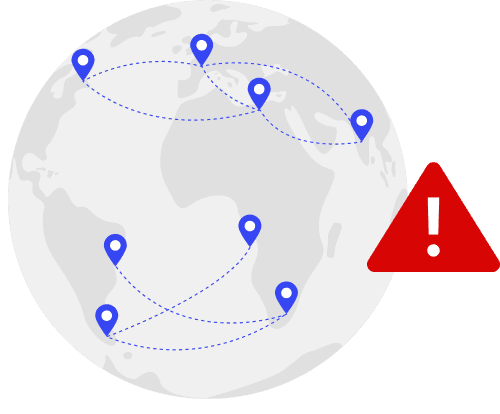
Notably, the EU has already removed its VAT de minimis for e-commerce in 2021,44 and other nations may follow the United States’ lead. For brands, this means monitoring trade negotiations, diversifying sourcing to stable markets, and building contingency plans to quickly respond to further changes on the horizon.

Initially, there may be backlogs at ports and postal facilities, but logistics experts forecast that this congestion will ease over a 6-12 month horizon.45 Both CBP and carriers are rapidly implementing automation tools, with CBP already developing an Enhanced Entry Process and pre-clearance data programs to expedite customs processing and flag risky shipments before they even arrive.
With the volume of packages expected to decline once fewer people order low-value items that are no longer duty-free, strain on CBP operations will naturally be reduced. By the time the holiday season arrives, the system is expected to have adapted to the new normal with minimal delays. Brands should actively monitor for new CBP guidance and improvements in carrier delivery times and stay in touch with their logistics providers for updates.
The end of de minimis will not kill cross-border e-commerce, but rather reinvent it. Analysts predict the change will spur a new ecosystem of infrastructure and technology, including the rise of micro-warehousing where brands store small inventory in foreign markets to fulfill local orders. This shift could also boost nearshoring, encouraging more production to move closer to the U.S. to take advantage of free trade agreements like CAFTA-DR.46
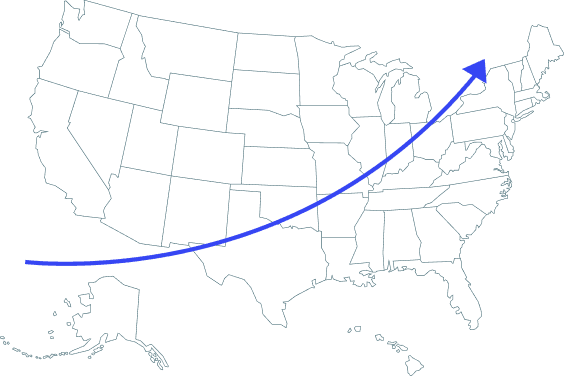
On the technology side, we can expect a proliferation of digital customs compliance platforms that integrate with e-commerce carts to automate duty calculations and documentation, making it easier for small merchants to operate. The overall result is a more resilient and localized model for global e-commerce.

With every shipment now formally on the books, a company's focus on compliance and ethics will become a key competitive differentiator. The crackdown on the de minimis exemption was partly motivated by issues like counterfeit goods and products made with forced labor, so there's no longer a way to “fly under the radar.” This new environment favors professional operators who can absorb the compliance burden.
CBP offers programs like C-TPAT47 where importers who maintain high security standards receive facilitated clearance and lighter scrutiny. Ultimately, the future belongs to companies that operate above board, with transparent supply chains and a commitment to ethical sourcing.
Experts largely agree that the end of de minimis signals a permanent shift in cross-border commerce, bringing more friction but also a more level playing field. Brands should closely monitor policy developments (CBP announcements, trade talks outcomes, etc.) and performance indicators to continually refine their strategy. By preparing for the long-term absence of duty exemptions and embracing adaptive logistics and new fulfillment models, brands can position themselves to thrive in a post-321 world rather than be caught off guard.
To help your brand, we’ve distilled the key insights into this practical *checklist and 90-day action plan:
Complete the SKU audit and cost simulations (from Section 3) in the first week. Identify any shipments currently in transit that will hit the U.S. after August 29 and coordinate with carriers to properly declare and avoid holds. Notify internal teams (e.g., customer service, marketing) about the changes so everyone speaks the same message to customers. If you haven’t already, freeze any marketing campaigns that heavily promote “free shipping” or quick international delivery until you adjust the terms. You don’t want to mislead customers based on old realities.
By week 2, have concrete discussions with your logistics partners about implementing bulk shipments or securing U.S. warehousing. Evaluate at least two 3PL quotes for domestic fulfillment if you need a new partner. Also, engage a customs broker if not already done, even on a trial basis for initial shipments.
Draft communications (emails, site banners, FAQ, customer support scripts) explaining upcoming changes to be rolled out around the Aug 29 date. It’s wise to prepare a brief “holding statement” in case media or customers ask for comment on the policy change – something that frames your brand as proactive and customer-centric despite external changes.
Update your Q4 budgets and pricing models to incorporate duty costs. If you need to adjust retail prices or add fees to cover the new import costs, make those decisions now and plan the timing carefully. Some brands may choose to roll out new pricing as the holiday season begins, while others might hold off increases until January to avoid surprising holiday shoppers. Decide what makes the most sense for your business and your customers.
After 90 days, convene your team for a post-mortem review of how the transition went. Catalog what went well and what didn’t. Celebrate the wins of overcoming this major supply chain upheaval and use the lessons learned to continuously improve. The end of de minimis signals a new chapter – but with the action steps above, your brand will be positioned not only to survive it, but to find competitive advantages in a more disciplined and transparent market.
The end of de minimis globally has introduced new challenges for brands of all sizes. As trade policies and practical realities continue to evolve, keep this guide handy as a living document. Adjust your checklist, revisit your action plan, and stay flexible.
If your brand, or a brand you know, has been materially impacted by the death of de minimis, the Stord team is here to help you preserve margins and continue to deliver a great customer experience.
This is in addition to all of the same benefits brands receive when working with Stord:
Optimize your conversion and increase AOV with Shipment Protection + A/B testing of ship options.
Deliver more efficiently with Stord Parcel - save intelligently on every delivery through our massive network of local and international carriers.
Reduce your average time-in-transit - 2 days faster on average with Stord.
Save money with market-leading pricing on world-class fulfillmentin the US.
Save money through unifying order routing and parcel optimization - unlock better costs per order.
Streamline your overhead - built-in automations for VIP customers, exceptions, B2B processing, and more.
Standardize and simplify returns - provide a self-service branded experience for customers with rapid refunds and fraud protections.
Most critically, you will be shipping orders in days.
Don’t let the death of the de minimis exemption derail your 2025 and beyond.
"Supply chain disruptions have become commonplace for start-up operators in recent years. However, it's important that our customers are not impacted by these changes. Stord was able to provide a solution that allowed True Classic to move quickly and continue providing great service for our customers. Ultimately, they helped us turn a disruption into an opportunity to evolve our mission to help our customers look good and feel good,
Head of Operations
Let’s get to work, together!